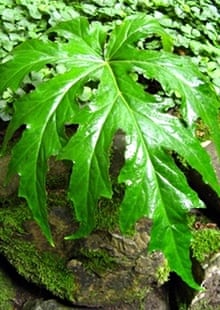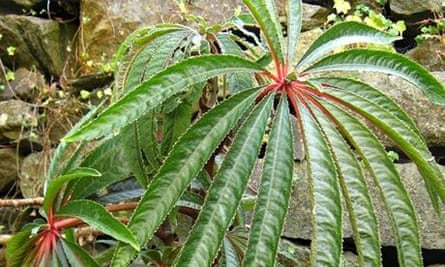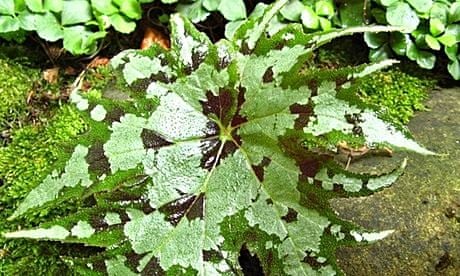I was introduced to begonias at a very young age. I remember visiting the house of my great great aunt Gwen and in the greenhouse I found flowers the size of dinner plates (or so it seemed at age five) in colours from vivid scarlet through to muted pink. Gaudy and brash the begonias left me in a state of awe.
At one point I started a collection of species begonias - I think I was aged about 10. They took up all the windowsills in the house where they gathered dust and flourished. Had I known then that many could be hardy and live outside, maybe they wouldn't have been such a nuisance to my mother and her duster.
The name begonia is due to 17th century botanist Charles Plumier naming the family after the French governor of Haiti Michel Bégon who shared Plumier's love of plant collecting. With 1400 different species and many new ones being added all the time, it should come as no surprise that some are hardy here in the UK.

The hardiest, it seems, is Begonia grandis evansiana, a tried and tested cane begonia that grows a stalk like a bamboo cane. Each year it dies back to nothing, dropping the bulbils it produces all over the floor around it. Then the following year the parent plant re-emerges from its underground tuber surrounded by tiny replicas of itself.

Close on its heels is Begonia sinensis, with more angular leaves; Grown not for the mid green upper surface of its foliage but for the deep crimson underside. This feature has led to one selection being called 'Red Undies'.

Begonia panchtharensis provides a contrast to these two cane begonias; it's a clump forming species with deeply lobed leaves that I have seen up to 25cm across. The name by which it was once known, B. sikkimensis, gives a clue to its hardiness. It comes from the high Himalayas and has survived -9C here in North Wales. Similar in leaf shape but not so in leaf colour is B. taliensis. This begonia has the most exquisite foliage: a kaleidoscope of silver and black with green edges works so beautifully with the jaggedy margins of its leaves. It was collected by Eric Hammond in China in 1997, and is not yet tested for hardiness here in the UK, but reports from the US are certainly encouraging.

One that's not so hardy but certainly should be grown is B. luxurians, another of those cane begonias. On first inspection you may mistake it for a Schefflera: but it grows to a whopping 6ft tall and screams "look at me"! Put it outside in a shady, humid spot for the summer and bring it in during the coldest months. Grown as summer bedding in the exotic garden at Great Dixter, B. luxurians is certainly nothing like the summer bedding plants and huge-flowered "show bench" begonias grown by my great great aunt Gwen.

Comments (…)
Sign in or create your Guardian account to join the discussion